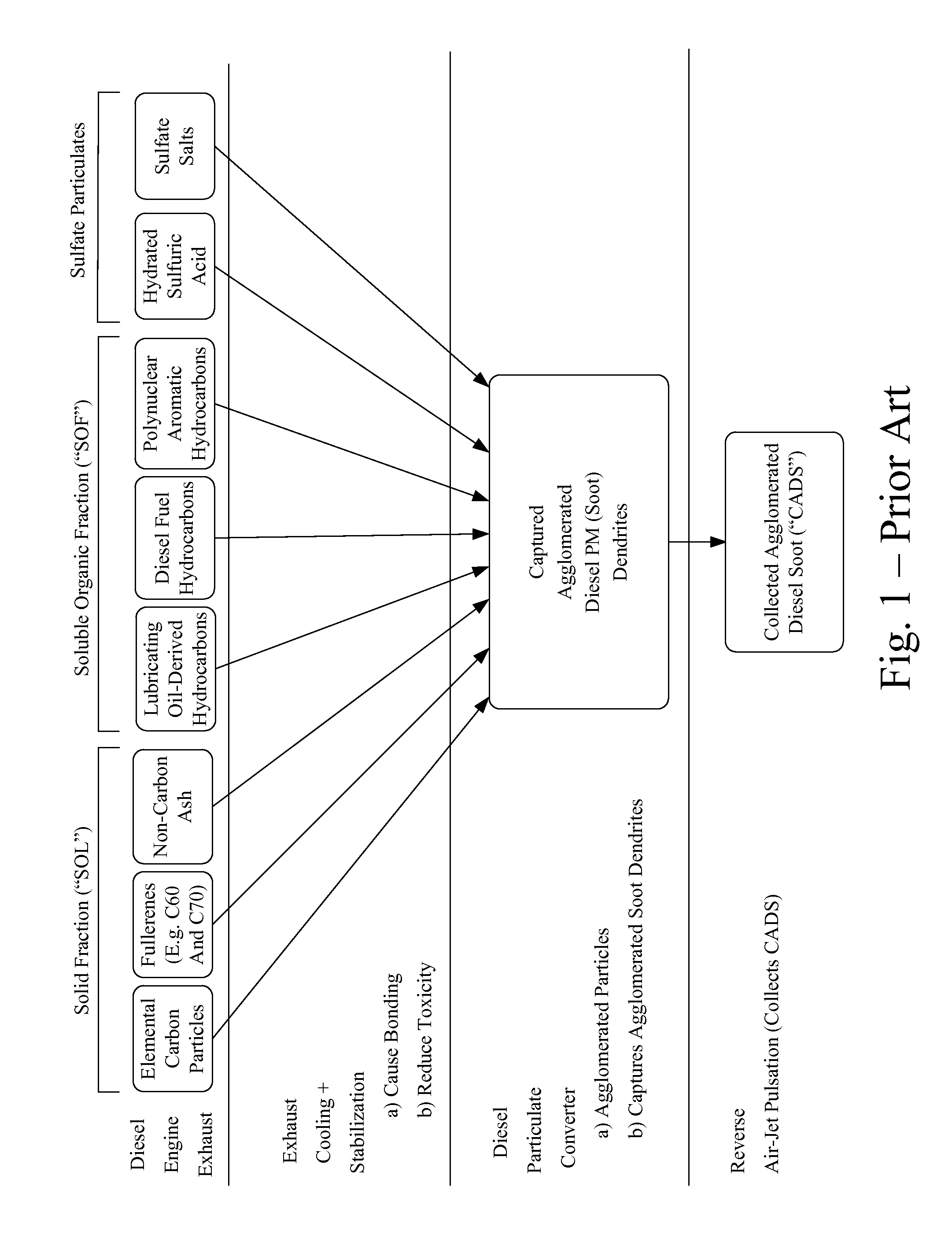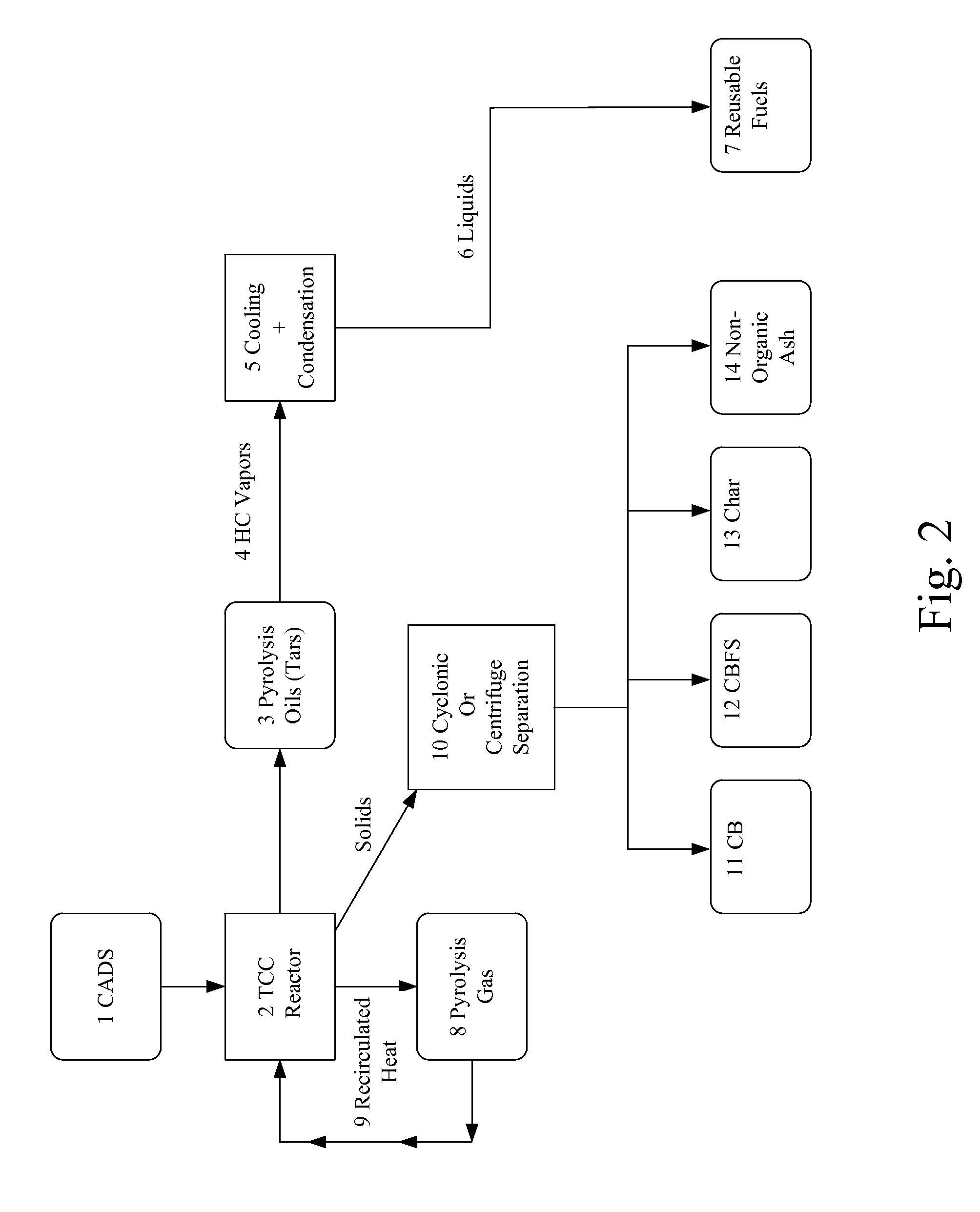It is well known that particulate matter emitted by diesel engines damages
respiratory health and the environment, which are compelling global problems that are especially burdensome for developing countries compromised by the need to employ more affordable but less desirable fossil fuels for the sake of economic growth.
Unfortunately, those initiatives have, inter alia, contributed to material increases in global fuel prices by supporting the notion of Peak Oil centered round light sweet
crude oil, which has become increasingly coveted for its low
sulfur content.
Advanced DECAT systems are designed, inter alia, to burn soot trapped on their filters, a process known as regeneration, before filter plug-ups raise engine backpressure to levels that increase fuel consumption, decrease power and may potentially even cause engine damage.
But if exhaust is not essentially hot enough, complex measures must be employed to enhance soot ignition, typically comprised of passive regeneration utilizing
precious metal catalysts and / or assisted regeneration involving fuel injected into the exhaust
stream.
Resorting to either form of Advanced DECAT system regeneration, in particular in the case of assisted regeneration involving
fuel injection, which creates fuel penalties, results in an escalation of
greenhouse gas (GHG) emissions.
The aggregate costs and other effects of complex
active components, sensitive
precious metal catalysts, required ULSD fuel to avoid catalyst poison and counteractive conversion of SO2 to
sulfate laden PM, and fuel penalty-related GHG escalation have impeded efforts to
mass retrofit Advanced DECAT systems onto the many millions of awaiting diesel engines that are known to be relentless polluters in developing countries.
Major concerns remain as to their price and reliability / durability, especially in countries where diesel fuels with high
sulfur content render Advanced DECAT systems ineffective, if not inoperable.
Advanced DECAT systems trialed thus far on trucks and buses in developing countries have generally been unreliable and prohibitively expensive due to the
precious metal catalysts and complex
active components needed for regeneration.
Further, they are impractical for
mass implementation due to some well documented vulnerabilities, which inter alia include: (a) intolerance of non-ULSD fuels, since
sulfur is known to poison precious
metal catalysts, (b) loss of PM emission control efficiency, which falls to 0% when 150 ppm sulfur
diesel fuel is employed and (c) an increase in the counteractive conversion of SO2 to
sulfate laden PM as sulfur levels exceed 150 ppm, reflecting the
impact of high exhaust temperature profiles (which favor SO3 production) and the presence of precious
metal catalysts—to the point where PM emissions more than double their baseline levels when 350 ppm sulfur
diesel fuel is employed.
Although Advanced DECAT systems installed with clean new engines employing ULSD fuel may effectively reduce government benchmark PM levels, the harmful ultrafine and nano particles that nonetheless escape tailpipes in those applications: (a) are approximately the same in count as those emitted under baseline (sans after-treatment) conditions by dirty old engines employing high sulfur fuels; (b)
pose more serious threats to
respiratory health because they penetrate deeper into
lung tissue; and (c) cause damage in the
atmosphere as they bond with other elements residing there to form secondary PM.
BCS accumulating on
snow and ice (especially in crucial
Arctic and Himalayan regions) reduces
albedo (i.e., ability to reflect light), causing a local melt that reduces
reflectivity even further.
However, it was eventually discovered that incremental efforts needed to reduce
sulfur content below 500 ppm did not commensurately lower the PM measured in
diesel exhaust.
They also have proven to be very expensive propositions.
Refineries reduce sulfur by employing sophisticated hydrocracking and hydrotreating modules but those are unfortunately very costly propositions.
However, it could inflate a
new energy market bubble destined to pop like the last one as its effects cause yet another global economic crisis, escalating volatility concerns that have already led to the deferral and cancellation of critical oil industry investment decisions.
Such assumptions are misguided and arguably wasteful, given that global reserves of heavy sour crude are substantially higher than the light sweet variety and growing at a faster pace.
When dealing with
land based (primarily
truck and
bus) applications, it is only practical for the DECAT facets (agglomeration, capture and collection) to be bifurcated from the Recycling facets.
It is neither logistically nor economically feasible to install Integrated DECAT+Recycling Systems onboard
land based vehicles.
Since OGVs carry approximately 90% of world trade (including two-thirds of all oil and oil products globally consumed) covering tens of trillions in tonne-miles / year, vessel owners consider their relative environmental
footprint to be light compared to other transport
modes but they indisputably emit massive amounts of
air pollution as their engines burn residual and distillate fuels with very high
sulfur content (often as much as several thousand times that of ULSD), serving up hazardous cocktails of PM with VOC and PAH alongside SOx / SO2 and other pollutants.
While fuel desulfurization generally yields meaningful environmental benefits in terms of reducing
acid rain and secondary PM in heavily-populated
land mass regions, it is arguably a precarious point in time to consider implementing more aggressive sulfur reduction initiatives on the high seas.
In applications where modern diesel engines are fitted with Advanced DECAT systems to maximize PM
elimination, the relative importance of non-carbon ash is more significant because such ash cannot be removed via filter regeneration since it is not combustible.
Thus, as the ash particles accumulate, they may result in filter blockage and increased engine backpressure, which requires more frequent cleaning of Advanced DECAT filters by mechanical means such as
compressed air or water-pulse methods.
Dealing with PAH content is an important issue for CB manufacturers, especially in the U.S. and E.U. where workforce regulations protect against its harmful effects.
According to a prominent ICBA member, Cabot Corporation, those PAH can only be extracted from CB surfaces by using strong organic solvents under rigorous laboratory conditions (generally performed with Soxhlet extraction by
toluene) at elevated temperatures, which are not representative of normal industrial
processing or environmental conditions.
Combustion is merely the oxidation of fuel for the production of heat at elevated temperatures and does so without generating useful intermediate gases, liquids or solids.
Whilst diesel engines combust fuel and emit pollutants, Advanced DECAT systems must incinerate PM soot before filters plug up, thereby escalating GHG emissions.
Fast pyrolysis conditions, typified by moderate temperatures and short
residence, ultimately cause fragmentation reactions.
In a vacuum, primary products are rapidly removed in the
gas phase and unavailable for further reactions.
 Login to View More
Login to View More  Login to View More
Login to View More 


